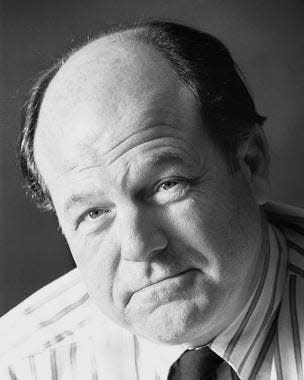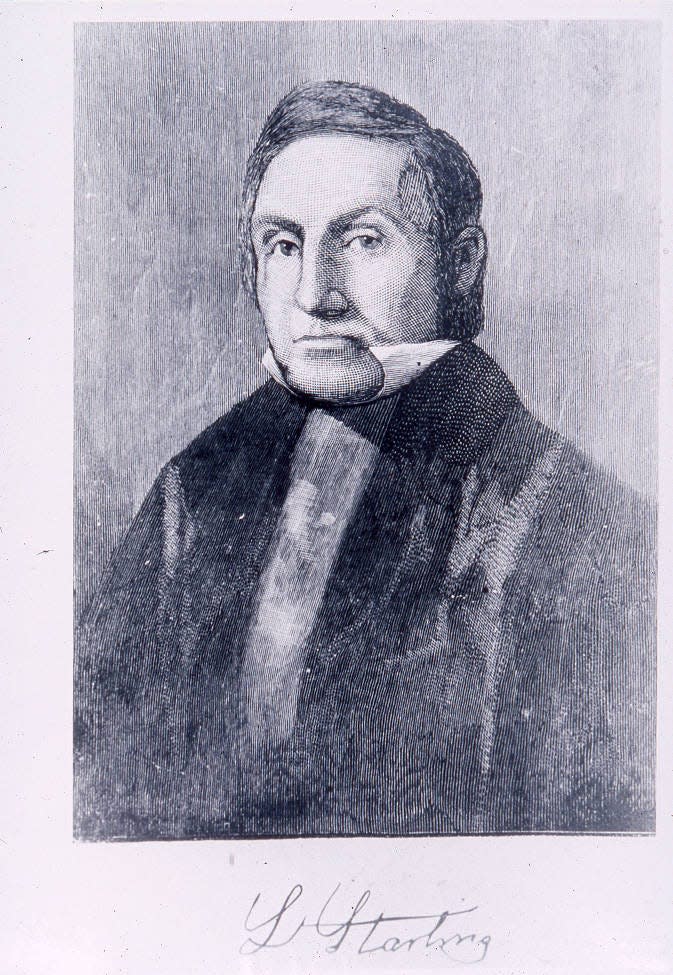Businessman Lyne Starling stood tall in Columbus history

Frontier people in central Ohio were somewhat different than what we are today. Indeed, they resembled us, usually sounded like us, and even without regular bathing often smelled like us.
But they were smaller than us. The doorframes of colonial houses are so low many of us bang our heads on them. They are low because these people were shorter and more compact than we are. They were people with generally less formal education but with far more experience living off the land.
And then there was Lyne Starling.
Starling stood 6 feet 6 and was a man of lean, formidable strength. He was well-educated by private tutors in his home. He also had the remarkably good fortune to have helpful family and acquaintances. Not the least of his accomplishments was the founding with a few others of the capital city of Columbus.

He was born in 1784 as one of the six children of Major William Starling of western Virginia. The major had fought in the Revolution, married Susanna Lyne and moved with 37 slaves to Kentucky. Then part of Virginia, Kentucky soon became a territory in its own right.
In those days, the Ohio River Valley was a “dark and bloody ground.” It was savagely contested by the newcomers against Native Americans until Starling and his friends took Kentucky and made it their own. It was against this violent background that young Lyne Starling grew up and learned business methods along with classical literature.
In 1806, at the age of 21, young Starling answered the call of his brother-in-law. Lucas Sullivant was a surveyor who had helped map the Virginia Military District between the Miami and Scioto rivers. Taking his pay in land, Sullivant had founded a village at the fork of the Scioto and Olentangy rivers in 1797.
Liking Benjamin Franklin, Sullivant named his town Franklinton and placed it in Franklin Township in Franklin County. Now in 1806, the successful village needed some administrative help. Lyne Starling was asked to come north and work in the office of the county clerk. He soon was appointed the office of clerk of courts and he held that office for some time.
Provided with money and help from Sullivant and his wife, Starling built a 50-foot, flat-bottomed “longhorn” raft, filled it with provisions and floated it all the way to New Orleans. He then made more money selling supplies to visitors and residents of Franklinton.
Ohio had become a state in 1803, with its capital in Chillicothe. After a brief move to Zanesville, the capital returned to Chillicothe. But by 1810, it was clear that a centrally located capital was desirable. After a convoluted process, the General Assembly looked at several towns and selected a site offered by young Starling and three other “proprietors” on the “High Banks opposite Franklinton at the Forks of the Scioto” known as Wolf’s Ridge.
Starling and his fellow proprietors earned more money selling lots in the new town. Starling lived in Columbus and made many friends and business contacts. He sought political office and was turned down as being a bit too “remote and austere,” although he was anything but that.
In later years, a court case challenged Starling’s title to his land in the capital city. He won the lawsuit. An early history described the results.
“A great jollification was held at the old National Hotel, which occupied the site of the present Neil House. It so happened that the Grand Proprietor, his lawyers and several friends had “tarried too long over the wine” and were all put to bed in one large room.
“At a later hour it was determined to give them a serenade, as expressive of the general joy of the situation. Accordingly John Young, the proprietor of the Eagle Coffeehouse, and a great admirer of Mr. Starling, with great exertion, gathered a strong orchestra of drums, fifes, fiddles, clarinets and horns, and proceeded to the hotel. But the great prelude … suddenly aroused the sleepers and they arose in haste to ascertain the cause.
“Mr. Starling was very tall … but easy and flexible in movement. In the room with him was John Bailhache, quite a small man. … Somehow in the darkness … Starling thrust himself into Bailhache’s breeches, with his feet and legs sticking out nearly a yard below, and the little editor, minus his own garments, got into Starlings high boots and long tailed coat. … Others were desperately struggling … and all were sweating and swearing when they were found in this ludicrous guise, and informed that the crowd awaited their presence and acknowledgement of the unusual honor of the serenade.”
In letters to his family in Kentucky, Starling wrote of his business ventures, his encounters with friends and his appreciation of the appearance of local ladies. He often noted that some of them were “suitable” to marry. But he never did. Starling died a bachelor.
Upon his death in 1848, he left $35,000 – a large sum at the time – to found Starling Medical College. Starling is buried in Green Lawn Cemetery.
Local historian and author Ed Lentz writes the As It Were column for ThisWeek Community News and The Dispatch.
This article originally appeared on The Columbus Dispatch: Lyne Starling a towering figure in Columbus history

